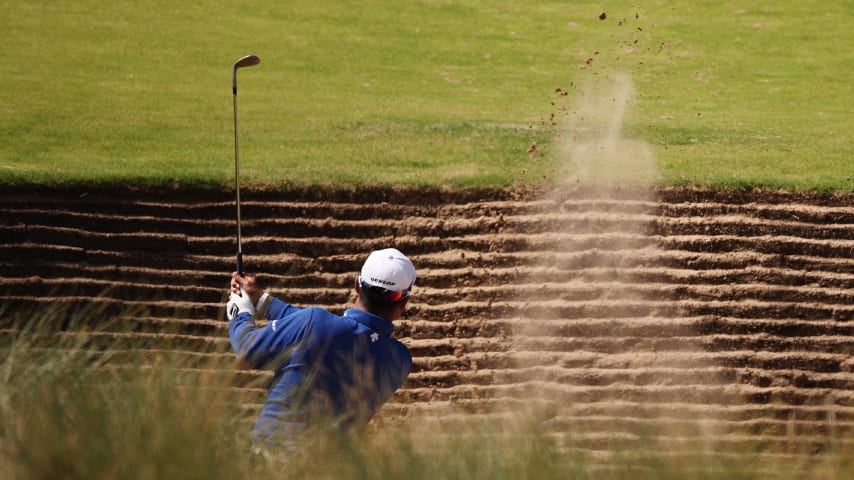Danger lurks everywhere on Royal Liverpool's new 17th
3 Min Read

Written by The Associated Press
HOYLAKE, England – The Open Championship is back at Royal Liverpool, a course more than a century old and filled with rich golf history. And the thing attracting everyone's attention this year is a new par 3 created to add more drama.
The challenging 17th hole was bulldozed into place, instead of being “forged by nature” as is often the case for links courses, to try to keep the excitement alive in the final stretch on Sunday. It is only 136 yards long but is well protected by slopes and bunkers that could yield everything from easy birdies to high scores.
“It sucks there and it sucks here,” former Open champion Zach Johnson said as he played the hole in a practice round this week.
He asked his caddie to drop a few balls at the edge of the green to see how they rolled – and they all went back into the deep bunker on the right.
Danger lurks everywhere around the green by the Irish Sea, from the steep fallout at the entrance to the tall fescue and waste areas at the front and back to the bunkers on the left and right – one of them about 10 feet (3 meters) below the putting surface.

“This time they made a really difficult turtle shell par 3. If you hit a good shot, put it on the green, you have a clear look at birdie. If you miss the green, you have a clear look at bogey,” Jon Rahm said. “I get you’re going for that on a championship Sunday, you have a one-shot lead, that hole can be pivotal.”
When another practice group came by, Sepp Straka was asked: “How are you doing down there?”
“Not good,” the Austrian said from the right-side bunker that could challenge players just to get the ball back onto the green.
“It looks pretty difficult from there,” someone yelled as world No. 1 Scottie Scheffler tried to hit from that bunker.
The hole, created a few years ago to replace the par-3 15th, is called the “Little Eye” in honor of the small island that can be seen in the distance on the Dee Estuary behind the green, which stands against the horizon line for those on the tee.
Anything that misses the small green will slope away from it and go into the danger zones. Finding the landing area will be extra difficult depending on the wind, which could be blowing hard into the players’ faces.

The R&A said it added the hole to “create more drama” to the course that now has a final stretch that includes the 620-yard par-5 15th, the 461-yard par-4 16th, the 136-yard par-3 17th and the 609-yard par-5 18th.
“A lot of things could happen on that, and I think that drama will unfold come Sunday,” R&A CEO Martin Slumbers said.
Hole designer Martin Ebert said the 17th comes as a nice break in an era when distance and power is valued so much.
“Everyone is sort of hung up on this power aspect of the game now, where the guys can drive it so far and it’s having this big impact on the golf courses in general, so this hole actually represents something which demands absolute precision,” Ebert told the AP. “It’s not all about power, it’s about finesse, about judging the wind, yeah, just finding that green surface.”
He said he was seeing mixed reactions from players after the first few days of practice, but hoped to have found “the balance right in terms of the level of challenge.” He expected the hole to play under par this weekend.
“You would expect golfers of this caliber that they would be able to find that green, but yes, with difficult wind conditions, no doubt, some of them will not hit the green and that’s where I guess the excitement will start,” Ebert said. “I guess that will provide a lot of drama and a lot of potential for a big change in the fortunes of The Open.”





